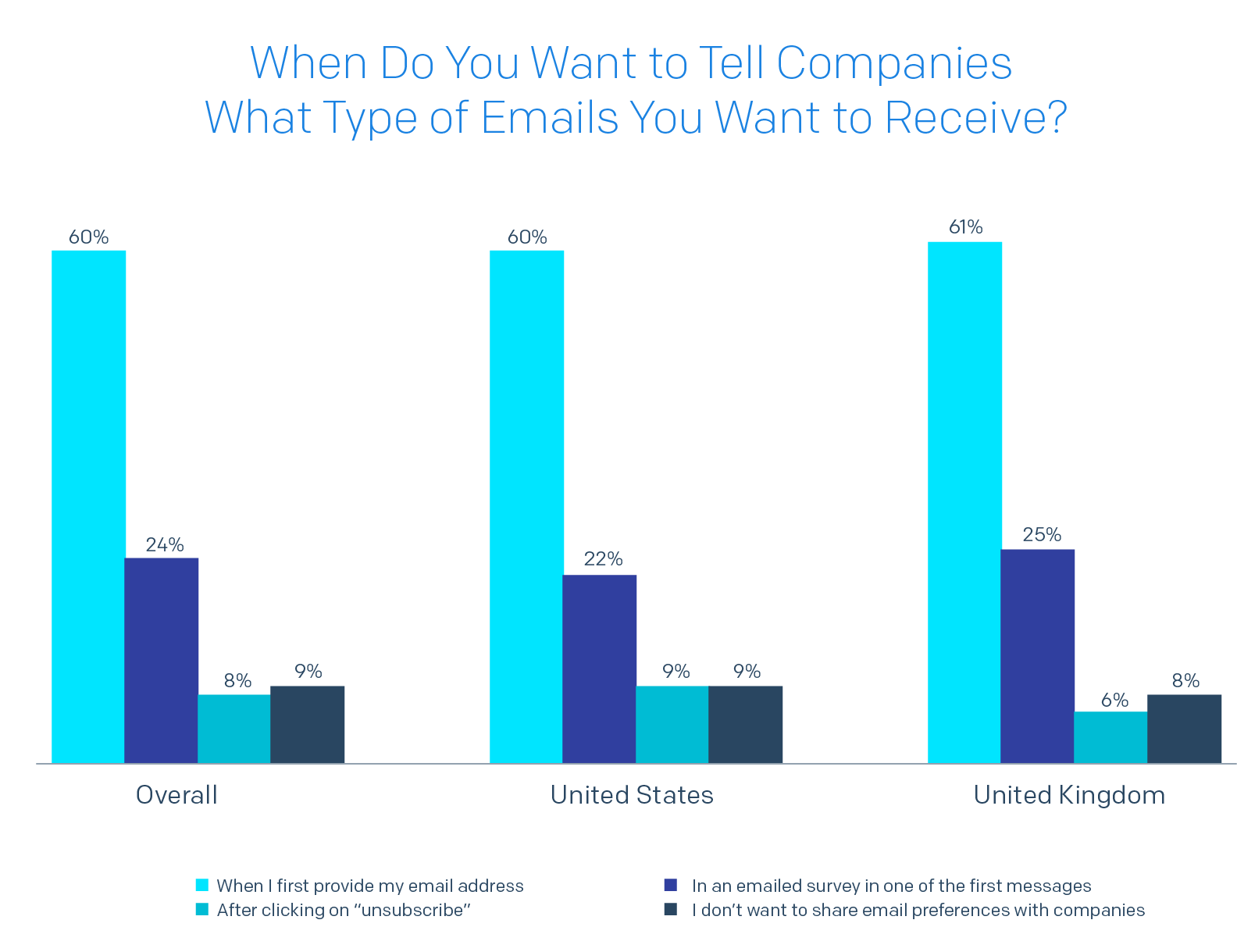Send With Confidence
Partner with the email service trusted by developers and marketers for time-savings, scalability, and delivery expertise.


Time to read: 6 minutes
Along with the slew of New Year’s Resolutions that abound with the changing of the year, so do the forecasts of what lies ahead/what trends we should look out for. So this year, after 7 years of working in email, I couldn’t help but throw my hat in the ring (better late than never)!
Coming off of the December release of our 2019 Email Benchmark and Engagement Study—a combination of Twilio SendGrid sender analysis and a comprehensive consumer analysis across generations—I’ve noticed a few trends that I think will be particularly relevant for senders in 2020.
In no particular order, the 4 email trends I think senders should look out for in 2020 are:
Sending frequency is something we constantly analyze at Twilio SendGrid—how open are recipients to email streaming into their personal inboxes and how do senders maintain trust and balance?
Over the past 3 years, we’ve seen a noticeable dip in the median monthly send rate for senders—from 9.8 emails a month per sender in 2016 to 7.0 emails a month in 2018.
However, we saw a changing of the tides in 2019 with the send rate jumping up to 8.3 emails a month—the highest since 2019. This was surprising to me. We always talk about the inbox as a sacred space—that senders need to invite themselves into the inbox and be mindful of boundaries. And if frequency is too high, we usually see a corresponding dip in open rate with any increase in send rate.

But what’s even more interesting, if you look at the following chart, is that recipients are actually more open (especially in retail) to receiving emails every day from senders. A staggering 37% of respondents in our consumer survey said they’d be open to receiving emails once a day from a company with products that interest them. What this tells me is that recipients are open to more frequent communication as long as senders are upholding their end of the bargain—providing value in the form of discounts, thought leadership, worthy product updates, etc.

So in 2020, it looks like recipients could have an appetite for more content, more frequently, as long as senders continue to provide value first.
One proven way to know how frequently your recipients want to hear from you is to ask them. Preference centers have long been a great avenue to collect this information from your users. But another, additional source of getting to this information quickly is to survey your recipients up front (like in the first email) to see what topics they’re interested in and at what cadence.
In fact, our study revealed an openness by recipients to be surveyed right away (24% of respondents) to ensure that the email programs they’ve opted into are a 2-way dialogue.

And 60% of recipients want to tell companies what kinds of emails they want to receive right when they sign up. So pay close attention to optimizing your sign-up forms to allow your recipients to weigh in on their preferences from the start.
Instead of tracking past purchase behavior and engagement statistics to try to create the most personalized experience (or sometimes “creepiest” as some of our respondents shared), try these two methods first. Recipients are savvier and savvier when it comes to data privacy, tracking, and consented opt-in, so why not try asking instead of tracking? Or finding a happy medium of both.
At the end of the day, it’s all about respecting your recipients’ preferences and privacy. Put those above all else and you’ll set yourself up well in 2020.
Say it isn’t so! We’ve been talking about multimedia in email for years now—who doesn’t love gifs, video, and interactivity? Right? Well...it looks like the tides could be turning here. Our survey showed 61% of overall respondents do not prefer gifs or video in email! The breakdown adjusts a bit by generation and region (the US was overall more tolerant than the UK, Millennials more than Baby Boomers).
But overall, when I look at the data, it seems like these responses really boil down an indifference when it comes video and gifs. Recipients are not seeing them as additive to their email experience.


So what does this mean for senders in 2020? Should you ditch your visual strategy in your emails altogether? No. But should you find a better balance with your messaging strategy so you’re not so heavily reliant on movement instead of words? Maybe.
Striving for clarity in your messaging should be key. And then you can determine which outlet best delivers that for your audience. Consider the trade-offs of the experience you offer your recipients as well. A still image in a well-branded email template will always be a better option than an on-trend gif that does not load. The same can be said for a crisp image or 2 of a new product release in lieu of a scrolling montage of the product that does not scroll all the way through.
Use your best judgment, but sometimes, simplicity is better in email. And if you see how many images recipients prefer to see in their emails (43% one image, 42% 2-3 images), it seems like everyone is asking for the same thing: direct communications without too much noise or complication.

At the end of the day, that makes our lives as senders easier too, right? Simplify and add “extras” sparingly.
This last trend is one we’ve seen starting to grow over the past few years, but I was surprised by the responses we received in our survey analysis. Our respondents said that email wasn’t a source for news. That instead, they looked to social channels for their most recent news updates.
With the emergence of highly popular “news” newsletters like The Skimm, Morning Brew, and The Hustle that all have huge followings, how is this possible? They literally put the “news” in newsletter. Engagement and subscribership to these newsletters just seems to be on the rise and I can’t imagine that will change in 2020. While social media can be a source for immediate news, why can’t email be the source for curated, targeted news?
What sets these newsletters apart is their ability to instill a distinctive voice in their reporting that is perfectly targeted to their distinct audience. This is an advantage that email has and will always have over social media channels—the ability to share longer narratives and connection with their followers. And with promotional opportunities and even sweepstakes pulled into these audiences, I think email newsletters have staying power.
More than anything, I hope these trends are conversation starters for you and your email program in 2020. Is the analysis from our engagement report surprising to you and what you’ve seen from your recipient base? Or have you noticed similar trends? What’s the one new thing you’ll try in your email program this year?
Maybe it’s experimenting with your email frequency after you’ve surveyed your new and current recipients. Maybe it’s exploring how much time (and budget) you invest in getting extra creative in your email design. Maybe increasing your focus on having a library of email templates will better serve your program than being on the forefront of new gif and video development.
Or maybe you’ll start a trend of your own. If so, we’d love to hear what that is. All trends need to start somewhere and I hope in 2020 that the next biggest email trend starts with you.
In the meantime, explore our full Email Benchmark and Engagement Study for more inspiration.
Partner with the email service trusted by developers and marketers for time-savings, scalability, and delivery expertise.